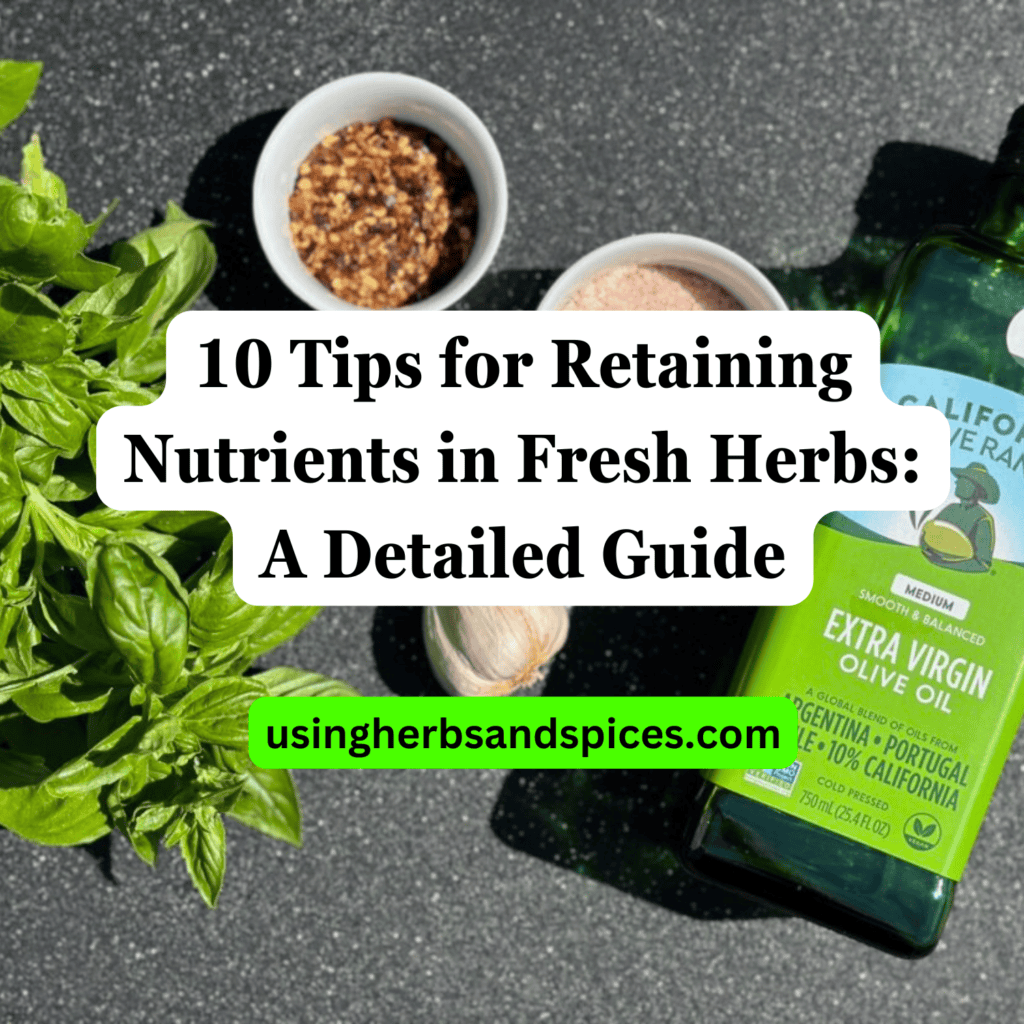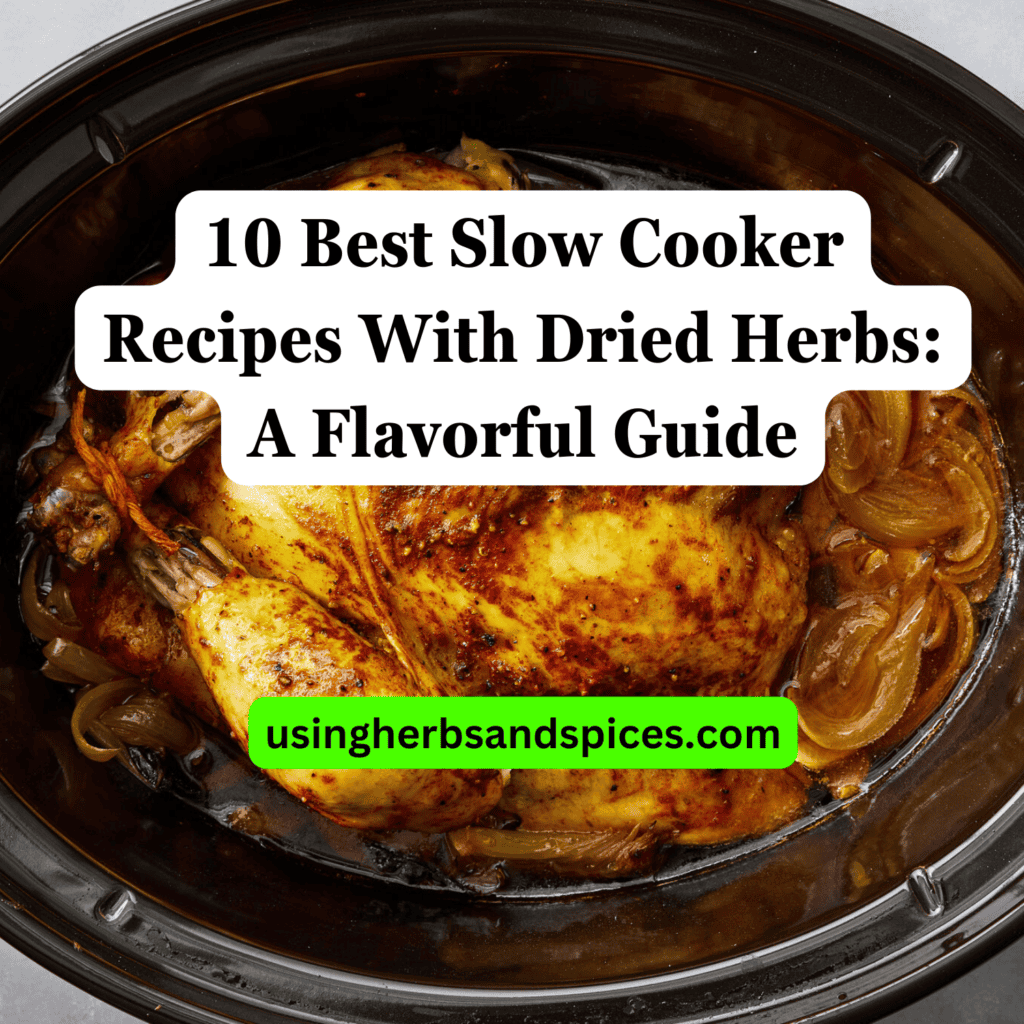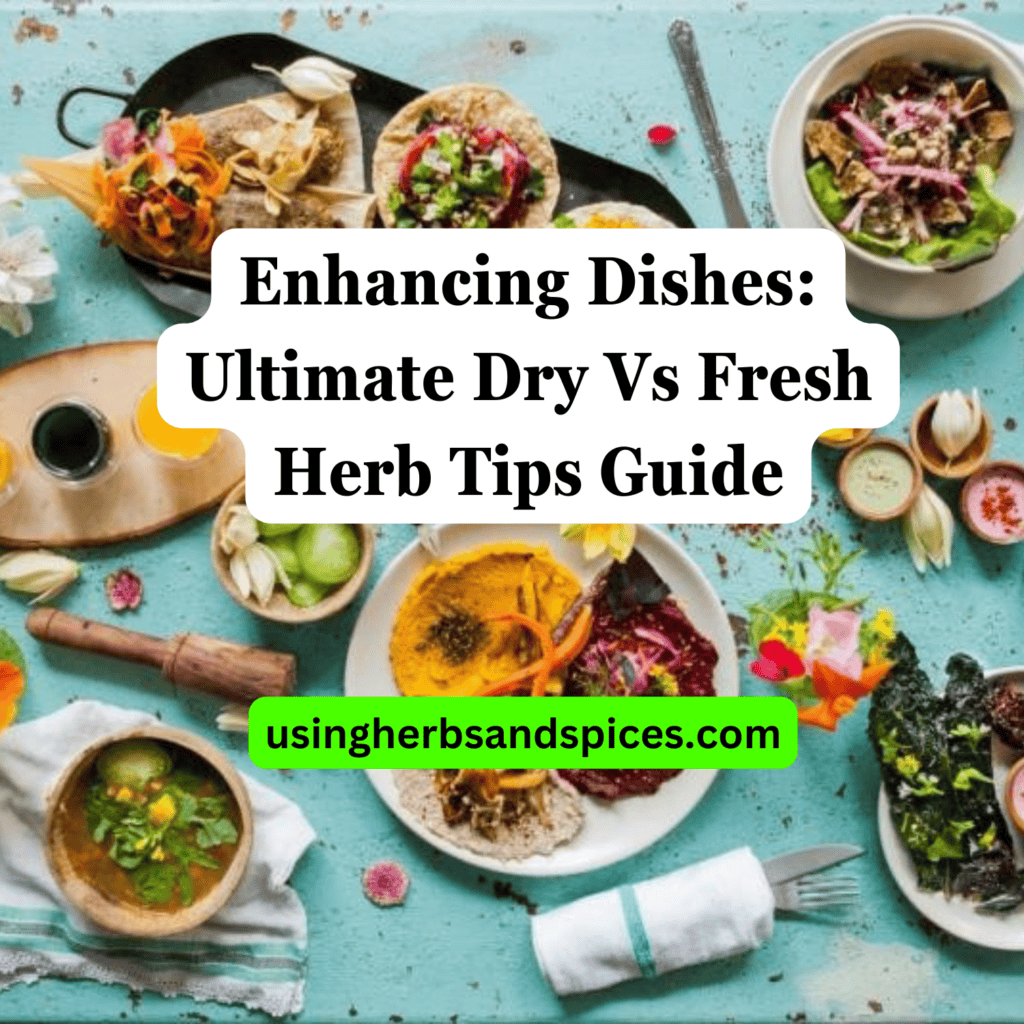SUMMARY: Keeping fresh herbs at their best for longer involves proper storage, like refrigerating or drying, and careful preparation to maintain their nutritional value. By incorporating them into meals smartly, you can ensure they deliver maximum health benefits.
Are you struggling to maintain the rich flavor and nutritional value of your herbs?

You’re not alone, and there’s a wealth of knowledge just waiting to help you master this culinary challenge.
- Understanding Fresh Herbs and Their Nutritional Benefits
- Proper Storage Techniques
- Preparation Methods to Preserve Nutrients
- Usage Tips to Maximize Benefits
Continue reading to discover how to keep your herbs vibrant, flavorful, and nutrient-rich.
Understanding Fresh Herbs and Their Nutritional Benefits
Fresh herbs are not just culinary flavor enhancers; they are packed with vitamins, minerals, and antioxidants that contribute significantly to health and wellness. Incorporating herbs like basil, mint, cilantro, and parsley into your diet can boost your intake of essential nutrients such as Vitamin C, Vitamin A, iron, and antioxidants. These nutrients play vital roles in immune function, vision, skin health, and protecting your body against cellular damage. With such powerful health benefits, learning how to preserve these nutrients becomes essential for anyone looking to maintain a healthy lifestyle through their diet.
Proper Storage Techniques
Storing fresh herbs correctly is crucial to extending their shelf life and preserving their precious nutrients—moisture, light, and improper handling are the main culprits that can degrade herbs quickly. Below, find effective strategies to keep your herbs fresh longer.
Refrigeration: Most herbs like basil, cilantro, and parsley prefer a cooler environment. Wrap them loosely in a damp paper towel and store in a plastic bag or container in the refrigerator. This method keeps them hydrated without becoming soggy and developing mold.
Air Circulation: Ensure that the herbs are not packed too tightly together or crushed under other items in the fridge. Proper air circulation prevents moisture accumulation, which can lead to decay and nutrient loss.
Herb Stems in Water: Treat herbs like fresh flowers by trimming their stems and placing them in a glass of water. Cover them lightly with a plastic bag and store in the fridge. Change the water every two days to keep herbs like mint and coriander vibrant and nutrient-rich. This method mimics their natural growing conditions and can extend their freshness significantly.
Freezing: For long-term storage, freezing herbs is an excellent option. Chop the herbs finely and mix them with water or olive oil before freezing them in ice cube trays. Once frozen, transfer the cubes to a freezer bag. This technique is perfect for herbs you plan to cook, as it preserves their flavor and nutrients excellently.
Adopting these storage techniques will ensure that your fresh herbs retain their nutrients and flavor, ready to enhance your dishes with their health benefits and taste.
Preparation Methods to Preserve Nutrients
When it comes to retaining the nutrient density of fresh herbs, how you prepare them plays a pivotal role. The following tips aim to maintain the highest level of vitamins and minerals during the preparation process:
- Wash Gently: Excessively washing herbs can lead to the loss of delicate, water-soluble vitamins. Rinse them lightly under cold water to remove any soil or residue, and pat dry gently with a paper towel.
- Minimal Cutting: Cut herbs only just before use to prevent nutrient degradation, which can occur when herbs are exposed to air. Use a sharp knife to minimize bruising and damage to the herbs’ cells.
- Avoid Prolonged Exposure to Heat and Light: Many of the essential nutrients in herbs can be diminished or destroyed by high temperatures and prolonged exposure to light. Whenever possible, add fresh herbs towards the end of the cooking process to maximize their nutritional benefits and flavor.
- Use the Entire Herb: Whenever it’s applicable, use the whole herb, including the stems and leaves, as different parts of the herb contain various nutrients and health benefits. This approach ensures you’re getting the most out of your herbs.
Implementing these preparation techniques can significantly influence the nutritional retention in your herbs, ensuring the dishes you prepare are as beneficial as they are flavorful.
Usage Tips to Maximize Benefits
Incorporating fresh herbs into your meals not only enhances flavor but can also boost the nutritional value of your diet. To get the most health benefits from fresh herbs, consider these usage tips:
- Infuse Your Cooking Oils: Add fresh herbs to olive or coconut oil to infuse them with flavor and nutrients. This method allows the oils to absorb the essential oils and antioxidants found in herbs.
- Raw is Best: Whenever possible, consume herbs raw. Incorporating raw herbs into salads, salsas, and dressings maximizes their nutrient retention, especially their vitamin C and folate content.
- Make Herbal Teas: Steep fresh herbs in hot water to make herbal teas. This method is excellent for extracting and enjoying the antioxidants and vitamins from herbs that may not be commonly used in cooking.
- Garnish Generously: Using fresh herbs as garnishes on dishes not only adds a pop of color and flavor but also boosts the overall nutritional profile of your meal. Sprinkling chopped herbs over your dishes ensures that you receive their full spectrum of health benefits.
By integrating these tips into your cooking routines, you can significantly enhance the nutrient intake of your meals while enjoying the diverse flavors that fresh herbs offer.
Preserving Nutrients in Fresh Herbs
In reviewing the essential tips for retaining nutrients in fresh herbs, it’s clear that proper handling, from storage to preparation, plays a crucial role in preserving their health benefits.
- Understanding the unique nutritional benefits of fresh herbs enhances our health and culinary experiences.
- Appropriate storage techniques are critical for extending their shelf life while maintaining nutrient content.
- Preparation methods should aim to minimize exposure to heat, light, and air to prevent nutrient loss.
- Incorporating fresh herbs into meals not only elevates the flavor profile but also maximizes dietary benefits.
10 Tips for Retaining Nutrients in Fresh Herbs FAQs
What are the best ways to store herbs to preserve their nutrients?
Storing fresh herbs properly is crucial for preserving their nutrients. For most herbs, wrapping them in a damp paper towel and storing them in an airtight container or plastic bag in the refrigerator is best. Some herbs, like basil, prefer being kept at room temperature in a glass of water. It’s important to keep them away from direct sunlight to minimize nutrient degradation.
How can I tell if an herb has lost its nutritional value?
Determining the loss of nutritional value in herbs can be challenging without scientific equipment, but visible signs like discoloration, wilting, and a significant decrease in aroma can indicate nutrient degradation. Fresh-looking, vibrant, and aromatic herbs are typically rich in nutrients.
Are dried herbs as nutritious as fresh herbs?
Dried herbs can be more concentrated in flavor but may have a slightly lower nutrient content compared to fresh herbs due to the drying process. However, they still contain valuable nutrients and can be an excellent alternative when fresh herbs are not available. The key is proper storage in airtight containers away from light and heat to preserve their nutrients.









